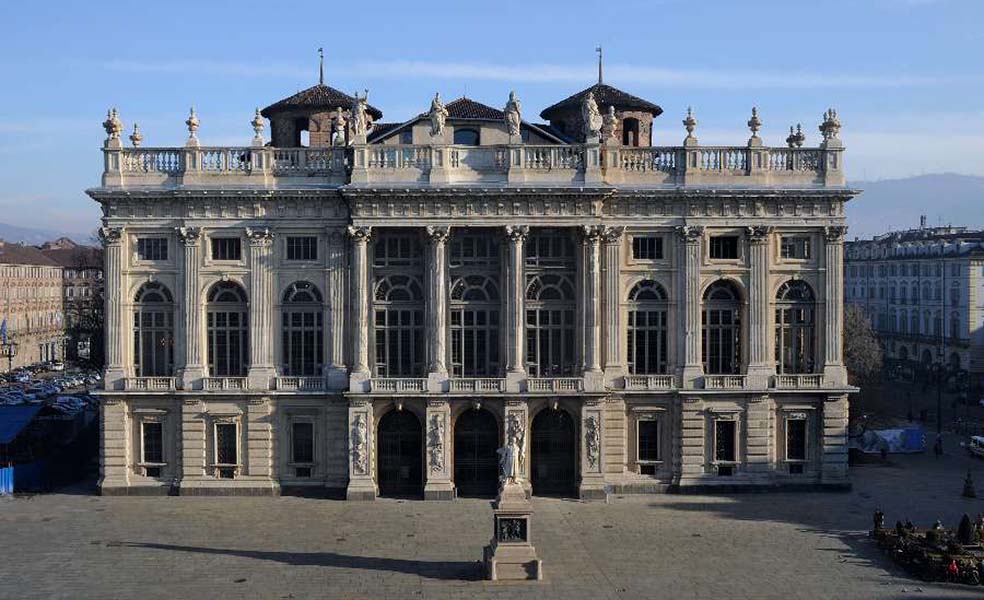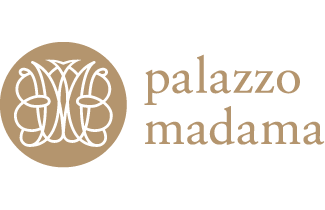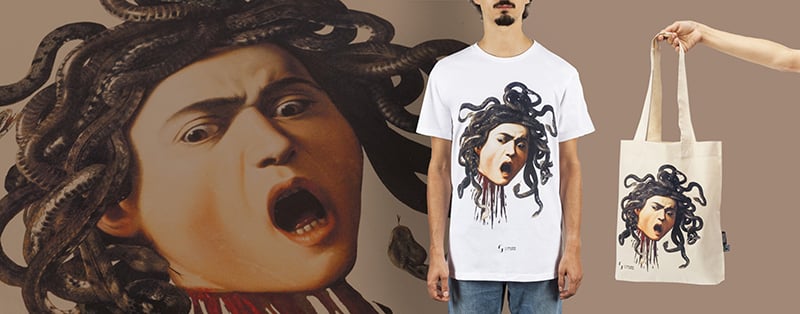Home / Museums / Palazzo Madama
Palazzo Madama

The history
Palazzo Madama is an extraordinary piece of architecture, whose story can still be read today by observing the building’s various structural and decorative elements, continuing through a walk in the Medieval Botanical Garden at the foot of the tower.
This green corner dates back to the medieval period, with the first records from 1402, when expansion work began under Ludovico, Prince of Acaja. Thanks to documents preserved in the State Archives, the garden has been reconstructed in both layout and the selection of plants and herbs described in period treatises.
The palace embodies the entire history of the city: originally a Roman gate, it was transformed in the Middle Ages into a fortress and later into the castle of the Princes of Acaja. Between the 17th and 18th centuries, the Royal Madames of Savoy chose it as their residence, and in the 19th century, King Charles Albert established the first Senate of the Kingdom of Italy there. Since 1934, the palace has housed the Civic Museum’s collections of ancient art.
The collections
Turin’s Museo Civico opened to the public on June 4, 1863, in the building on Via Gaudenzio Ferrari (the Museum later moved to Palazzo Madama in 1933). Initially, the collections were very varied, even though they were all focused on Turin’s history: archeological finds discovered while paving new roads in the city, 19th-century paintings from Piedmont, mementoes from the Risorgimento, collections of Savoy coins. But also testimonies of the “history of handmade objects from Byzantine times to the 18th century”: glass, ceramics, textiles, embroidery, enamels, works in ivory, gold, iron, and leather, furniture, illuminated manuscripts, gems, and cameos. The interest in applied arts from the Middle Ages to the 1700s would then become one of the two driving forces for future acquisitions, while archeological finds, mementoes from the Risorgimento, and 19th-century paintings would gradually be given to other city museums. As the 1800s ended and using the South Kensington Museum of London—opened in 1851—as a model, the Museo Civico would become a museum of arts and industry. An Italian Kunstgewerbemuseum, which shared with other institutions abroad the utopia of influencing the qualitative aspects of coeval artistic artisanry and nascent industrial productions, providing craftsmen and designers with a great number of models of all types and techniques and of great formal quality. In parallel, before the new unified State opened an Office for the Conservation of Monuments (the current-day Superintendence), the Museum focused on saving ancient sculptures from churches and castles across Piedmont and Valle d’Aosta and from the Savoy family from the antiques market and exportation abroad. Starting around 1910 another focus for the Museum became only “regional” painting: early Piedmont painters from the 15th to 16th century and artists associated with the Savoy court between the 1600s and 1700s.
Palazzo Madama, closed for restoration beginning in 1987 for almost twenty years, reopened to the public in December 2006 with a completely renewed museography and still today follows its two-fold vocation that had been defined in the late 1800s: a museum of the city and Piedmont and a museum of decorative arts from all ages and places.
Medieval Botanical Garden
Turin’s Castle Garden was first mentioned in 1402 in documents that record the expenses for upkeep to the building during the reign of Prince Ludovico d’Acaia (1402–1418): these documents mentioning the Garden are the Conti della Vicaria e Clavaria di Torino, the logbooks in which the city’s treasurer, who during the Middle Ages managed the city on behalf of the Princes d’Acaia and then the Dukes of Savoy, recorded the maintenance expenses of the Castle and the city’s fortresses.
The logbooks, today kept at the State Archive of Turin (Sezioni Riunite), cover a span of time from 1402 to 1516. In order to recreate the Garden, the notes contained in these Medieval documents were followed, honoring the traditional division of the space into a hortus (garden), a viridarium (forest and orchard), and an iardinum domini (Prince’s garden), along with traditional furnishings and fittings (for falconry or raising pigs and chickens).
In addition to the plants and vegetation mentioned in these ancient documents, this space also included plants and herbs that were not listed specifically in the documents but were undoubtedly present in Medieval gardens both across Italy and France, based on the information found in treatises on farming and medicinal plants from the 14th and 15th centuries.
The Garden (hortus) Organized according to a checkerboard pattern made up of rectangular flower beds, the Garden is a special space, one visited by the prince during his strolls in the shade of pear and apple trees, and by the Castle gardeners, who tended to the plants used to supply the kitchens with beans, vegetables, herbs, and medicinal herbs. The enclosure served to block the entrance of animals.
The Forest and Orchard (viridarium) From the Latin viridis (verdant), this small wooded area with tall trees was often located outside the Castle walls where pigs, falcons, doves, and mills were found.
In Turin, the area set aside for the forest and orchard was very vast and, at one point, engaged fifty gardeners at the same time. In addition to chestnut, walnut, willow, plum, sorb, cherry, olive, and palm trees—all mentioned in ancient documents—a section of this space was occupied by the Prince’s vineyard, which produced wine for the Castle.
The Prince’s Garden (iardinum domini) This was a private space for the princes, used for reading, conversing, resting, and playing.
In the Middle Ages it was located on the southernmost edge of town, near the walls and Porta Fibellona; it was closed off by walls flanked by blackberry bushes and made from stone with a pergola covered in grapevines. It must have looked like the depictions found on tapestries and miniatures from the 1400s: surrounded by a dense field of millefleurs, it hosted a fountain, often present in courtly literature, brick seating covered in grass and ivy, and a series of majolica vases embellished with scented plants like lavender, sage, and marjoram.
The Princess d’Acaia Bona of Savoy kept a cage with parrots in this section of the garden. The garden lent itself to various social-educational purposes. For Palazzo Madama it was a great opportunity to develop and expand its museum offer, for its itineraries and the possibility to guide learning strategies toward new topics related to the city’s ecology, to the importance of green spaces in community life, to their history, and to current-day issues related to safeguarding them.
Recreating the Medieval garden also means exploring marginal vegetation species, restoring sense and value as regards biodiversity, as well as favoring and promoting projects in collaboration with other city institutions. The project was completed in 2011 thanks to major financial support (1,100,00 euro) by the Fondazione CRT as part of the broader project, “Historic Gardens and Parks.”
Temporary exhibitions
Vedova Tintoretto. In dialogo
From September 19, 2025, to January 12, 2026, Palazzo Madama – Civic Museum of Ancient Art in Turin and the Emilio and Annabianca Vedova Foundation in Venice present the exhibition “Vedova Tintoretto. In Dialogue.” An exceptional exhibition designed to bring together the art of two great Venetian painters, each among the greatest interpreters of their era – Jacomo Robusti, known as Tintoretto (Venice, 1518-1594) and Emilio Vedova (Venice, 1919-2006) – read in parallel, so as to address the development of Vedova’s work in comparison with that of his chosen master, investigating similarities and consonant (or dissonant) themes underlying their individual expressive choices.
Visit information
- September 19, 2025 – January 12, 2026
- Admission included in the museum ticket
Bianco al femminile
On the occasion of the refurbishment of the Textile Room, on Wednesday, February 26, 2025, Palazzo Madama presents an exhibition that recounts the close connection, material and symbolic, that links white, the natural color of silk and linen, to women.
Through a selection of fifty textile artifacts held in Palazzo Madama’s collections, six of which have been restored for the occasion and fourteen of which are on display for the first time, curator Paola Ruffino accompanies us along a centuries-long history that passes through minute embroideries, intricate lace, and arrives at the most iconic of women’s garments in white: the wedding dress.
Medieval linen embroidery, needle or bobbin lacework, and white-on-white embroidery are arts with which female hands have created masterpieces. This subtle and indissoluble bond spans the centuries and sees women in the role of authors, creators and keepers of tradition, refined users and patrons of fashion fabrics and accessories.
A highlight of white fashion is, in France and Europe, the late 18th century. The fascination exerted by Greek and Roman statuary inspired clothing that looked to antiquity. Young women adopt simple en-chemise dresses, held in at the waist by a sash; the cingulum model of married Roman women, worn high below the breast, initiates a fashion that will last for thirty years. The preferred fabrics are cotton muslins, silk gauzes, light satins, white or in minute patterns, like the china of tea sets.
Around this centerpiece, illustrated by dresses, miniatures, fans and women’s accessories, the exhibition explores the past and the future. To the 14th and 15th centuries lead back the embroideries of women’s monasteries, particularly from the German area and the Lake Constance region, worked in linen on natural linen cloth, where the design, made of simple but widely varied stitches, is outlined only by an outline in colored silk. A type of work that, because of the poverty of the materials and ease of execution, later spread to the secular domestic sphere, for the decoration of tablecloths and cushions.
In Italy, decorative motifs of medieval origin typically Mediterranean, such as birds, castles, and trees of life, outlined in white on ‘rensa’ cloth, a sparse and thin cloth, of which two rare examples are on display, possibly Sicilian or Sardinian, persisted for a long time on domestic cloths.
Between the sixteenth and seventeenth centuries, lace-making was born in Europe, featuring the finest white linens and the extraordinary skill of Venetian and Flemish lace-makers. A selection of Italian and Belgian lace borders and accessories illustrates the exceptional decorative achievements of this exclusively feminine art, which in the 18th century transcended the narrow confines of the home or convent and became organized into manufactories.
In the 19th century, the onset of mechanized production caused the loss of virtuosity in the manual art of lace-making, a virtuosity that reemerged instead in white thread embroidery on the thin batiste cloths and muslins of women’s handkerchiefs. Four splendid specimens illustrate the high level of refinement achieved by these accessories, decorated with embroidery work that, unlike that in polychrome silks and gold of the great ornamental and liturgical hangings and clothing, also practiced by men since the Middle Ages, always remained an activity only for women, even when practiced professionally.
The exhibition concludes in the 20th century with one of the themes that most closely unite women and the color white in our tradition, the wedding dress, with a 1970s gown, short, accompanied by a very special veil, an unobvious choice that reiterates the strength and persistence of the relationship between the image of women and the whiteness of white.
The selection of fabrics is juxtaposed in the installation with several works of applied art, including miniatures, engravings, porcelain, and bindings from the museum’s collections.
On the occasion of the new display of textile collections, Palazzo Madama is offering a meditative sewing workshop curated by Rita Hokai Piana on Saturdays, March 15 and 22 and April 5 and 12, 2025, from 10 a.m. to 1 p.m. All info on the website and in the attached press release.
Visiting information
- Admission included in the museum ticket
- February 27, 2025 – February 2, 2026
Monday – Sunday: from 10am to 6pm.
Tuesday
1-2 hours
Temporary exhibitions included in the ticket price

Books and guides
No products were found matching your selection.
Merchandise
No products were found matching your selection.
Related museums
No products were found matching your selection.


